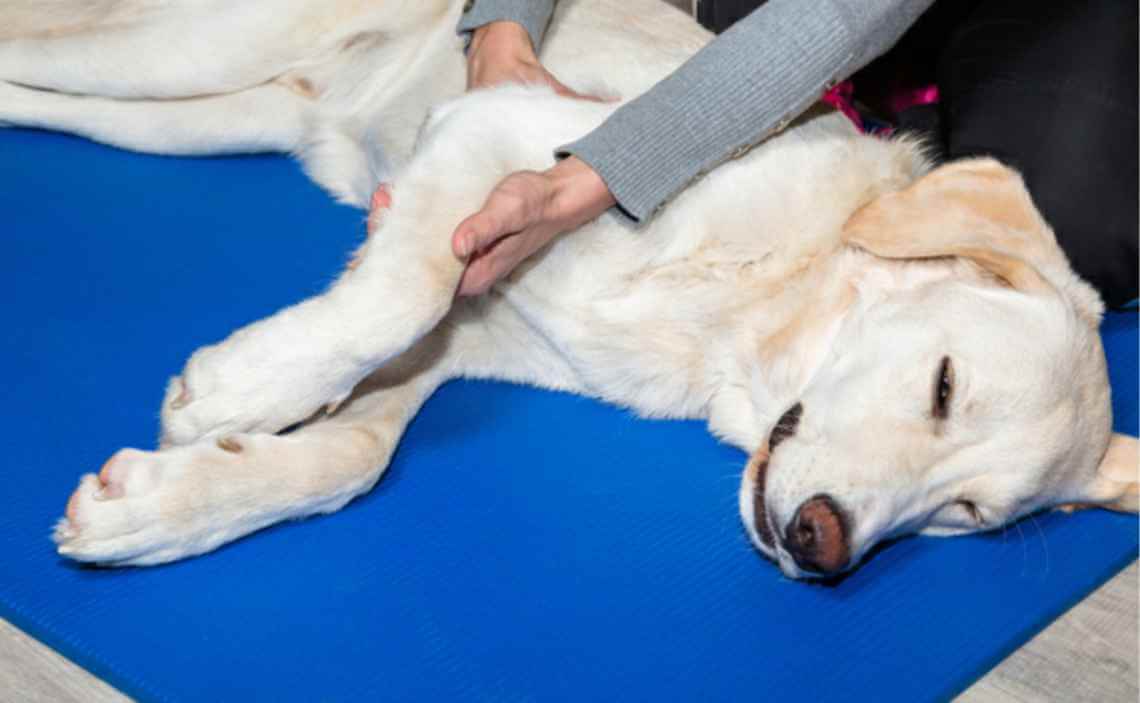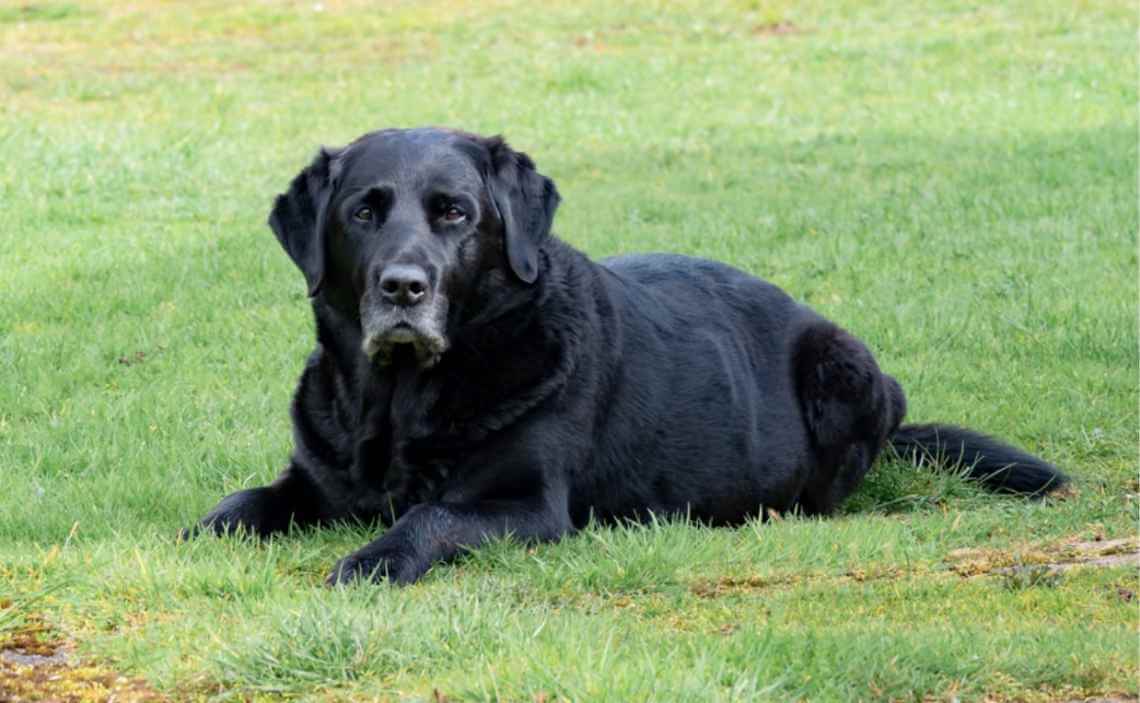
Arthritis – both in people and canines – is a difficult disease to treat. It’s a common problem, especially in older dogs and large breeds. Although there is no cure for this progressive disease, early identification and appropriate management strategies can help keep your dog active and improve quality of life.
What is Osteoarthritis?
The clinical name for arthritis is osteoarthritis. Osteo = bones + arthritis = painful inflammation and stiffness of the joints, is a degenerative joint disease. Osteoarthritis is a progressively worsening inflammation of the joint caused by the deterioration of cartilage. In a healthy joint, cartilage acts as a cushion to allow the joint to move smoothly through it’s full range of motion. When a person or dog has arthritis, the cartilage cushion breaks down and no longer protects the joint. The loss of this protective cushion causes pain, inflammation and a decrease in range of motion. It can also cause bone spurs, which are very painful. While any joint in the body can develop osteoarthritis, the condition in canines is most common in the limbs and lower spine.

Risk Factors for Canine Osteoarthritis
Any dog can develop osteoarthritis, particularly as they age. However, there are some factors that can predispose your dog to this condition, such as:
- Large breeds, such as German Shepherds, Labrador Retrievers and Golden Retrievers
- Obesity
- Middle to senior age
- Repetitive stress on the joints from athletic activities
- Injuries such as fractures or ligament tears
- Infections that affect the joints, such as Lyme disease
- Improper nutrition
- Poor conformation
- Genetics
If your dog is predisposed to developing canine osteoarthritis, it is important that you stay up-to-date with regular wellness visits to your veterinarian. Your veterinarian will want to ensure your dog maintains a healthy weight and active lifestyle and can often catch early warning signs of osteoarthritis before the problem becomes serious.

Signs of Canine Osteoarthritis
Osteoarthritis can be difficult to recognize in its early stages; often the symptoms do not become apparent until the affected joint is badly damaged. Some dogs can be very stoic and hide their pain until it becomes severe. It is important that you monitor dogs as they grow older in order to catch the disease early.
Common signs of canine osteoarthritis include:
- Stiffness, lameness or difficulty getting up
- Difficulty climbing stairs
- Lethargy
- Reluctance to run, jump or play
- Weight gain
- Irritability or changes in behavior
- Pain when petted or touched
- Difficulty posturing to urinate or defecate, or having accidents in the house
- Loss of muscle mass over the limbs and spine
If you suspect your dog is developing osteoarthritis, be sure to have him or her examined. Your veterinarian will evaluate your dog and may recommend x-rays to help rule out other diseases that can mimic arthritis. X-rays can also help your veterinarian determine the location and degree of damage to the joint.

Treatment of Canine Osteoarthritis
Unfortunately, osteoarthritis is a progressive disease with no known cure. Prevention through diet, exercise and the use of protective joint supplements is the best way to keep your dog healthy. The focus of treatment is on controlling pain, decreasing inflammation, improving the quality of life and slowing the development of the disease.
-
Joint supplements
Many veterinarians recommend nutritional supplements to improve function, reduce inflammation and slow the progression of the disease. The three supplements most often recommended are:
- Glucosamine
- Chondroitin
- Green-lipped mussel.
2. NSAIDs
In addition to nutritional supplements, many veterinarians will prescribe non-steroidal anti-inflammatory drugs (NSAIDs) to help control pain as well as reduce inflammation. NSAIDs can have negative side effects on the liver and kidneys with continued use, so your veterinarian will discuss the risks and benefits of NSAIDs for your dog.

- Alternative treatments
Some veterinarians will recommend alternative treatments for osteoarthritis, such as acupuncture, physiotherapy, cold laser and dietary changes. In severe cases, surgery to remove damaged tissue or to replace the joint entirely may be recommended.
- Weight management
Weight management is vitally important for your dog’s health in many ways, including the prevention and control of osteoarthritis. Carrying excess weight is not only painful on damaged joints but also can speed up the breakdown of cartilage. In healthy dogs, obesity can predispose them to early onset of the disease, as well as other diseases. If your dog is overweight, your veterinarian is your best resource to help your dog begin a diet and exercise plan.

Osteoarthritis is a painful condition but can be managed to improve your dog’s quality of life. Helping your dog with lifestyle choices to maintain a healthy weight and stay active can help support your dog’s mobility. Talk with your veterinarian to decide the best course of action for your dog. Don’t try to treat your dog on your own, including giving him or her NSAIDs, supplements or alternative treatments. Together with your veterinarian you can devise a plan that will help your dog live a longer, happier and more active life.
Have you had a dog diagnosed with osteoarthritis? What treatments were prescribed? Please share your experience with the rest of the Canine Campus community in the comments below.

 Home Remedies – How to Treat Your Dog’s Upset Stomach at Home
Home Remedies – How to Treat Your Dog’s Upset Stomach at Home Can Dogs Eat Nuts?
Can Dogs Eat Nuts? Help Your Dog Fight Seasonal Allergies
Help Your Dog Fight Seasonal Allergies 6 Tips to Protect Your Dog from Summer Heat
6 Tips to Protect Your Dog from Summer Heat We Are Open
We Are Open






Leave a Reply